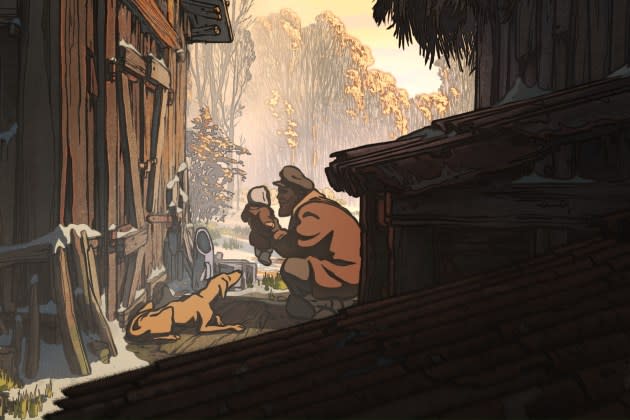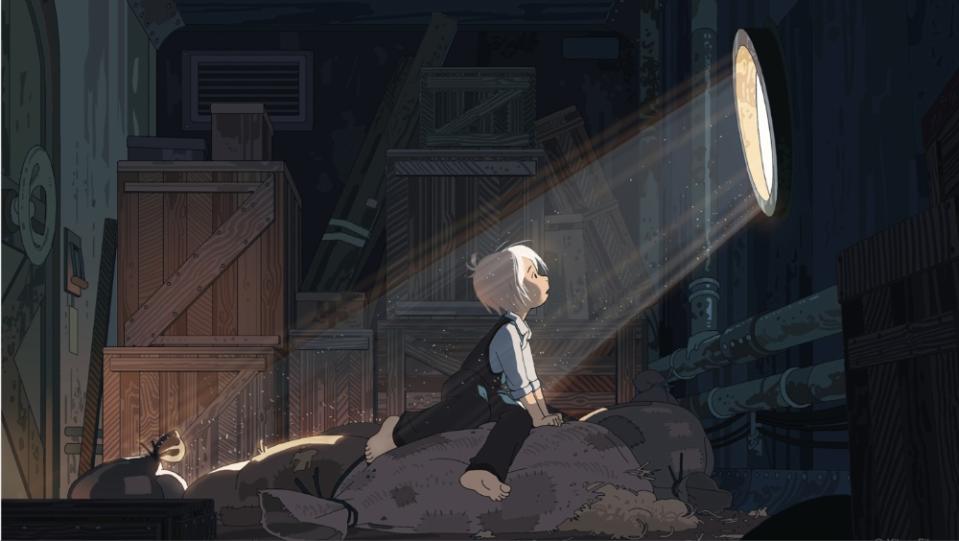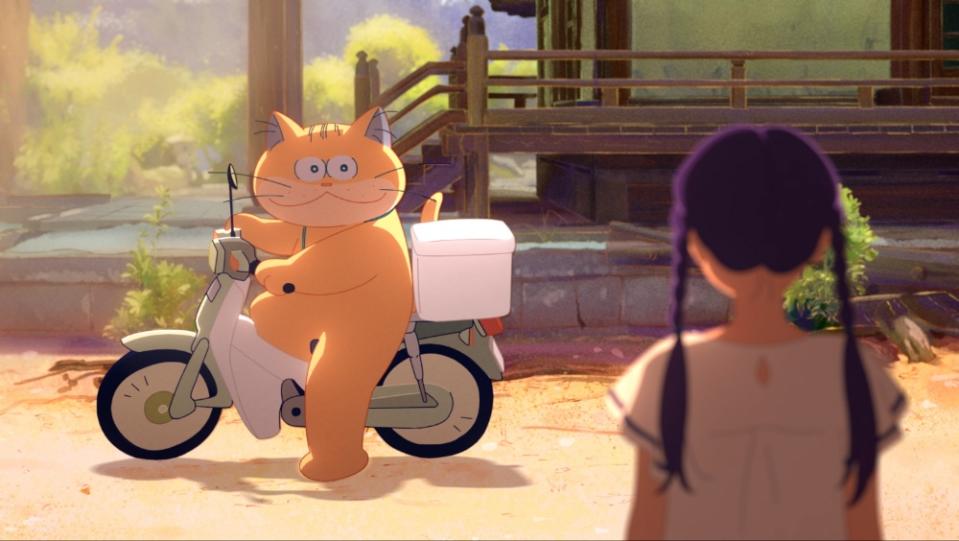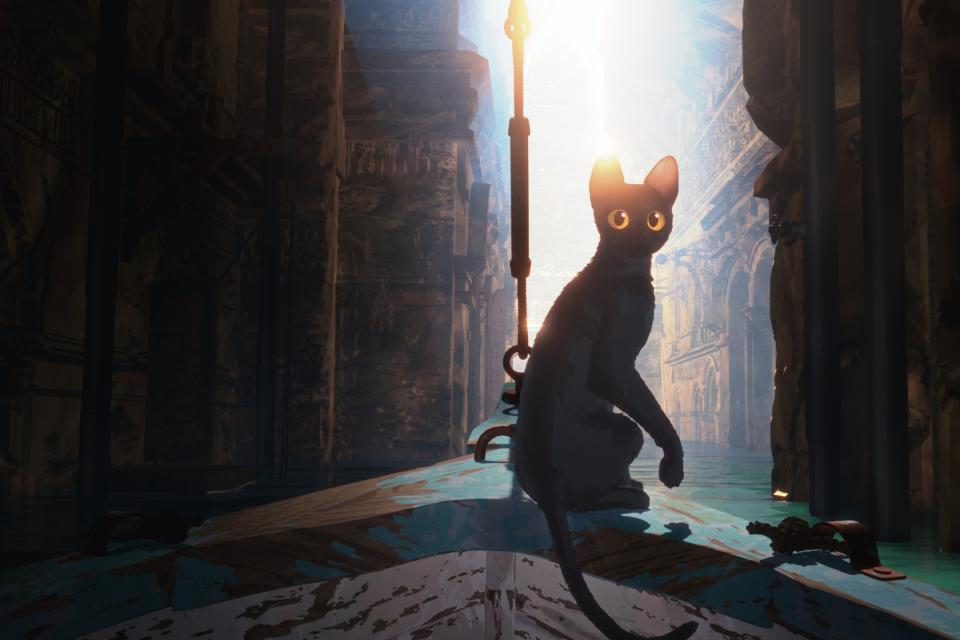French Animation Breaks New Barriers

After closing out last month’s Cannes competition, Michel Hazanavicius’ “The Most Precious of Cargoes” opened this year’s Annecy Animation Festival on an auspicious note. With French productions accounting for one half of Annecy’s 12 competition slots, the Alpine showcase doubles a show of force for Gallic filmmakers writ large – a fact made all the more impressive given their sector’s relative youth.
“20 years ago, French animation barely existed,” says “The Most Precious of Cargoes” executive producer Valerie Schermann, who credits “Kirikou and the Sorceress” director Michel Ocelot with forging a new path that many have since followed. “Michel showed that it was possible to produce animated features in France; without him I would never have been able to make my own films.”
More from Variety
But if Schermann built a sterling filmography in those ensuing decades – with credits such as “Zarafa,” “Wolfy, the Incredible Secret” and “The Red Turtle” – the stalwart has stepped back from animation in recent years, citing financing difficulties and rising costs among the hurdles keeping French productions from reaching their full potential.
Indeed, several of the industry’s leading producers struck similar, contradictory notes, both celebrating this year’s hearty show of force in Annecy and Cannes while venting frustrations about greater structural impediments.
“Our industry needs to be less prejudiced,” says Xilam founder and CEO Marc du Pontavice. “We still have this vision of animation as a medium for children, while the poles between animation and live-action are very much apart. Our projects don’t have movie stars, and our filmmakers usually stay unknown. That results in a slow-moving mentality when it comes to our work. It can be incredibly difficult to get things off the ground.”

Producers like Marc du Pontavice and Sacrebleu Productions chief Ron Dyens (“Flow”) see this contraction writ into the language of funding mechanisms – which often bolster distinctions between the filmmaking styles – and across A-level festival juries, who might applaud animated fare without offering a prize.
Indeed, both Hazanavicius’ recent Palme d’Or contender and Sacrebleu’s Un Certain Regard launched “Flow” won acclaim and prestige in Cannes but walked away empty-handed, while the last animated film to win a Competition prize – French or otherwise — was the Vincent Paronnaud co-directed “Persepolis” back in 2007. As fate would have it, Paronnaud will bring his long-awaited “Into the Wonderwoods” to Annecy this year.
However, all is not doom and gloom across the Gallic industry. If anything, Marc du Pontavice abounds with optimism when citing local distributors’ growing zeal (“All of them want animation – I’ve never seen anything like it!”) and when defending his sector’s unique artistic proposition, especially in light of an impending market contraction. “The [strike-related] shortages of the coming years will offer us new opportunities,” says du Pontavice, who recently retooled his TV project “Lucy Lost” as a feature, and will launch production later this year.
“There’s going to be a growing need for French animation, because we know how to make high-quality features on reasonable budgets. Our work requires too much time and effort to go wrong. Since we don’t have those well-known actors or directors, we invest based on good scripts and artful graphic universes, following a work process that gives us extraordinary control. And when we put in the work, the results show.”
To a person, all of the producers who spoke with Variety evoked “The Most Precious of Cargoes” in glowing terms, heralding the title’s Cannes berth as a win for a sector that hasn’t claimed a similar spotlight since 2008’s “Waltz With Bashir” and, more importantly, comparing the film’s Oscar-winning director to the likes of Wes Anderson and Guillermo del Toro.
“When Michel Hazanavicius makes an animated film, all of a sudden, people in the live-action world look at it differently,” says Miyu Productions CEO Emmanuel-Alain Raynal. “For a lot of people, animation is still a niche cinema, and that’s exactly what we’re fighting against. That’s not to say that we should only celebrate live-action directors who made the jump, just that [filmmakers like Hazanavicius, Guillermo del Toro and David Lynch] show there’s little difference from an artistic point of view.”
“It’s just a question of technique,” Raynal continues. “I think this will enable the professional community to consider our techniques a little better and will encourage the public to mix things up. No matter the medium, we’re still talking about cinema. That’s all there is to it.”

On an industry front, Raynal believes that greater investment from private broadcasters and an amendment to France’s tax credit scheme to strengthen minority co-production would help ease a number of financing woes, while he sees the now-entrenched public esteem for graphic novels (“They’re now on the bedside table of every literary critic in the world,” he memorably puts it) as a touchstone worth applying to cinema as well.
And the producer has put together an upcoming slate with such considerations in mind. After premiering out of Directors’ Fortnight in Cannes before screening in competition in Annecy, Miyu’s “Ghost Cat Anzu” will lead to several more Franco-Japanese co-productions, connecting the Paris-based outfit with an unabashed and welcoming market for animated fare.
Miyu is also extending that bridge across the Atlantic, developing the graphic novel adaptation “The Long Night” with L.A.-based Modern Magic — the event animation outfit launched by “Spider-Man: Into the Spider-Verse” writer-director and producer Rodney Rothman and former MGM co-president of production Adam Rosenberg – and the animated musical “Ogresse” with Grammy winner Cecile McLorin Salvant.
“If we only offer the same type of films, things don’t evolve,” says Raynal. “So we need to develop strong propositions, and to offer the public different narratives and aesthetics in order to build these bridges, whether between industries or techniques.”
Sacrebleu founder Ron Dyens shares in that sentiment, encouraging his colleagues to look further afield. “In a world that’s completely open, we must keep flexible and open our antennae to find future talents, future languages, future cinematic grammars,” he says. “We need to do less, but better, in order to discover the right authors, to best promote our films, and stay demanding in our relations with distributors and salespeople.”
As both producer and co-screenwriter of the much acclaimed “Flow,” Dyens swears by a hands-on approach more closely aligned to that of American animation moguls.
“The notion of the artistic producer isn’t properly recognized in France,” says Dyens. “That’s a real shame, because the producer should mediate between the filmmaker and the audience. We should sense what might appeal to the audience in narrative or technical terms, and make these personal subjects accessible to a wider public. The producer is, in a sense, the first viewer.”
Like Valérie Schermann, Dyens took advantage of the trails blazed by Michel Ocelot, founding Sacrebleu in 1999 and subsequently spotlighting Annecy-acclaimed filmmakers like Anca Damian, Rémi Chayé and Benoît Chieux. With the roving, immersive “Flow,” Dyens hopes to offer a 3D proposition unlike any presented before.
“These new, digital technologies are so valuable,” he says. “We can free ourselves from classic cinematic grammar, which started with the New Wave, and now can be felt it in animation. Today, young creators can more fully express their images and ideas thanks to new technologies and increasingly powerful computing times. Because above all, a film should put the viewer in a different state.”
For her part, producer Valérie Schermann has seized a similar line. In lieu of a new feature, Schermann is now developing an Immersive 360 fairy-tale with none other than Michel Ocelot, with the duo keying into a different set of possibilities.
“Michel and I are thrilled, because there’s little frame of reference so you’re forced to work and think about the narrative differently,” beams Schermann. “That’s what makes it so exciting. Every week presents a new problem, a different artistic challenge. We’re on a creative highway, without knowing where we’re going – and we feel just as we did 20 years ago when there was no feature-length animation in France.”

Best of Variety
Sign up for Variety’s Newsletter. For the latest news, follow us on Facebook, Twitter, and Instagram.

 Yahoo News
Yahoo News 
